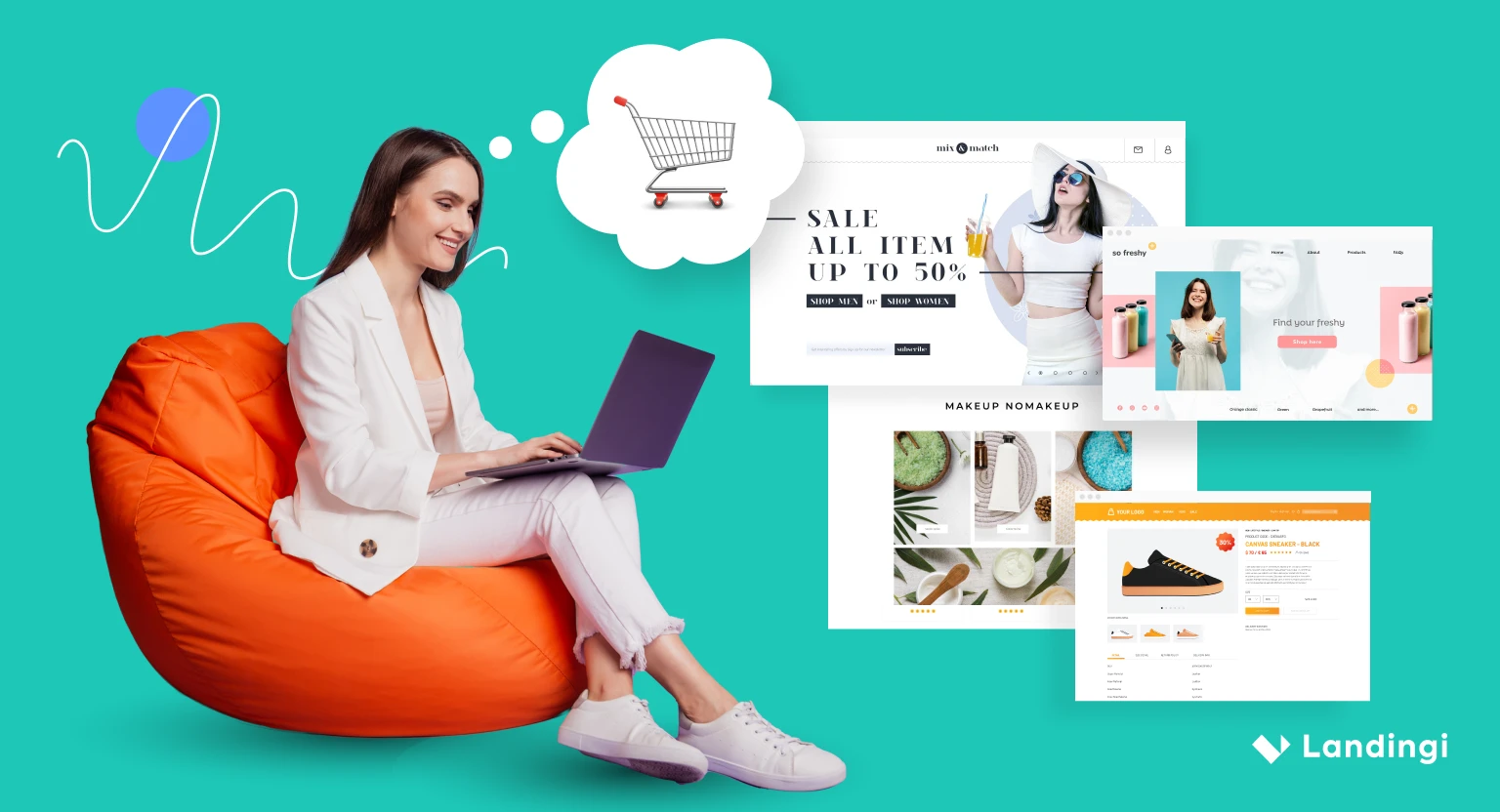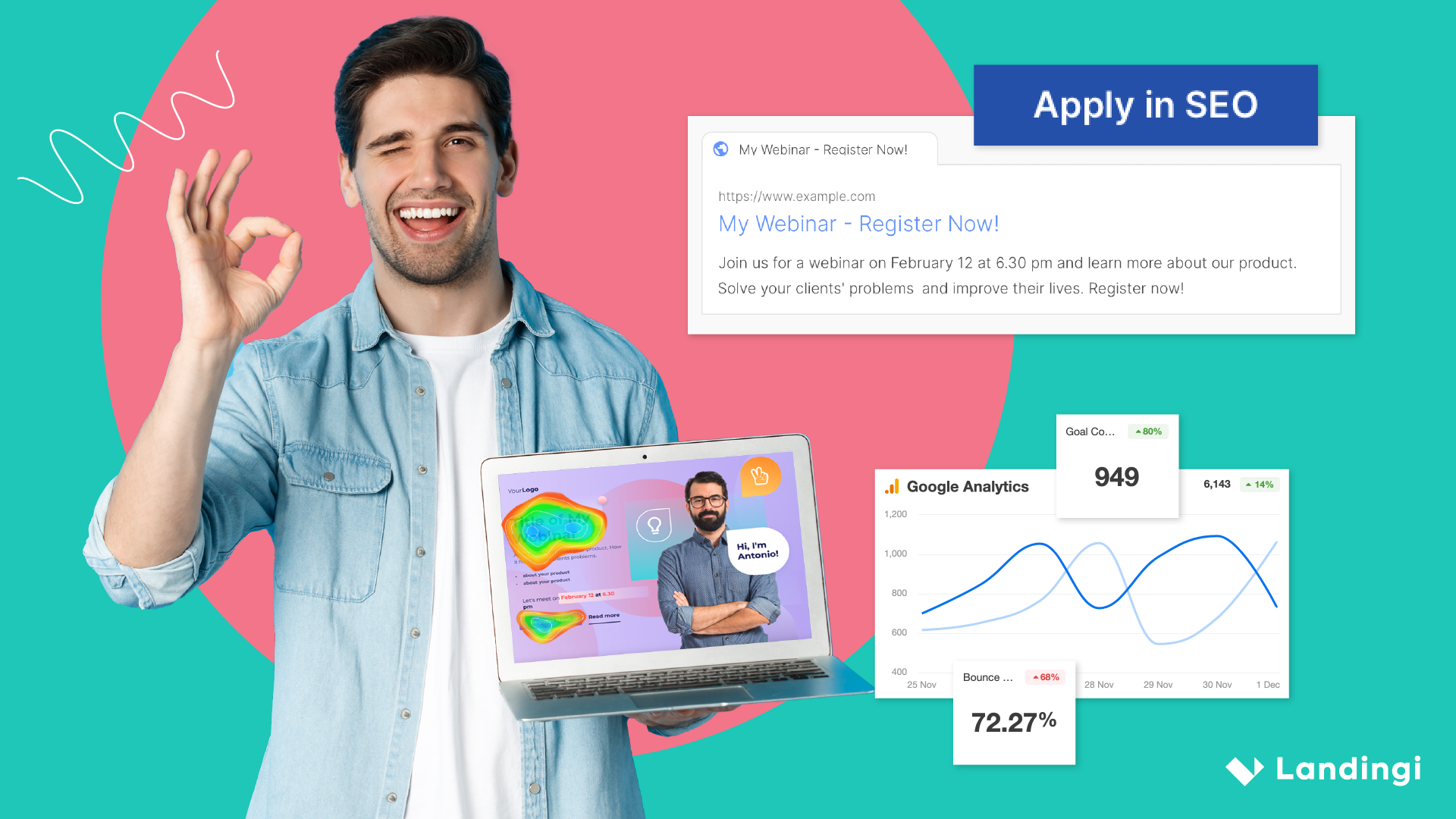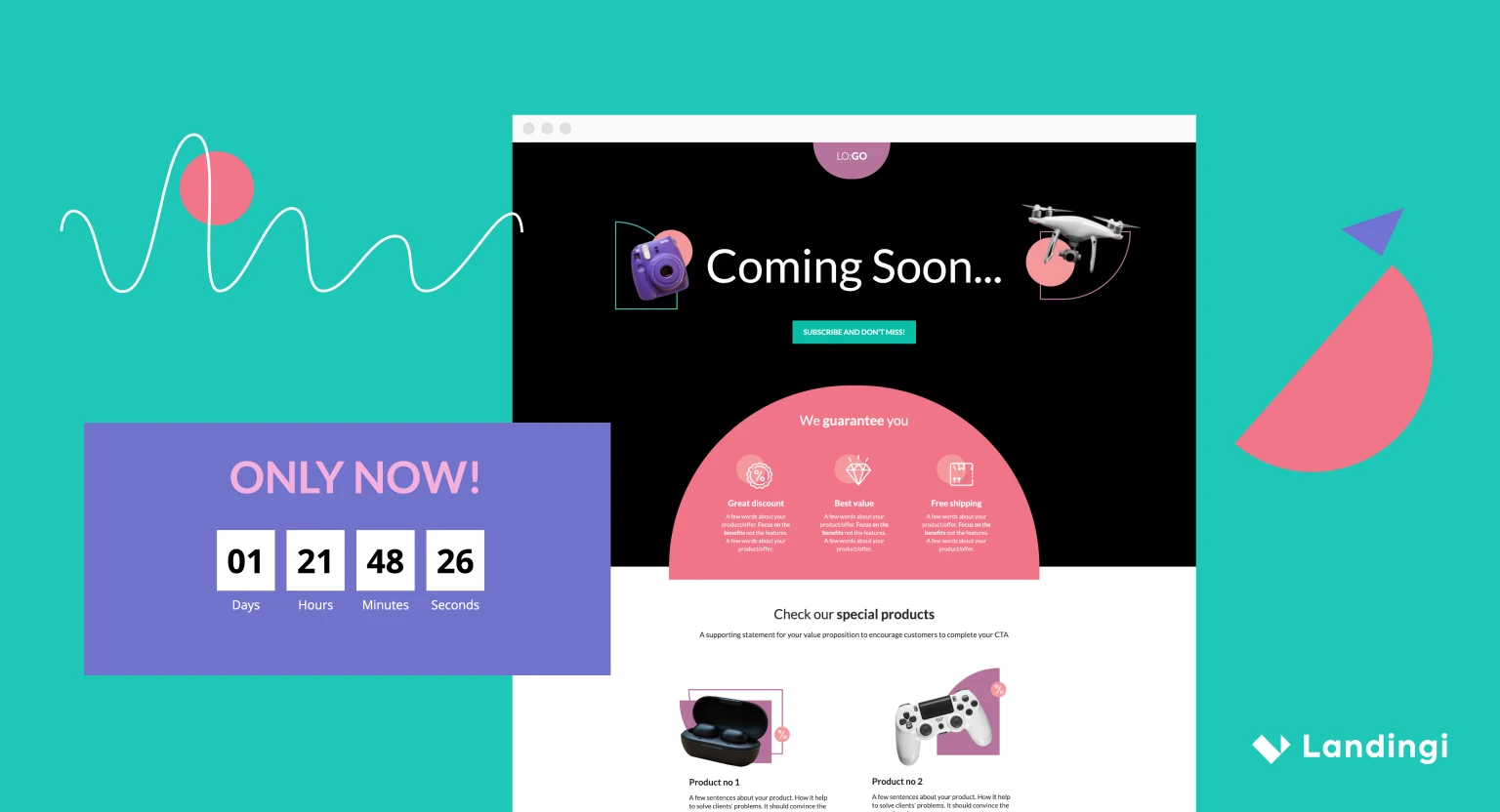A new breed of shopper is emerging in the bustling aisles of stores, both virtual and physical. They’re not just filling carts with essentials. They’re on a quest for pleasure, seeking treasures that promise delight and indulgence.
It’s called hedonic shopping. Purchase is less about need and more about the joy of the experience.
This article peels back the layers of hedonic shopping, analyzing the psyche of these pleasure-seekers.
You’ll learn what drives their purchasing decisions, how they define value, and why they might choose a diamond-studded watch over a simple timepiece.
Make your sections smartable and let go of mundane manual tasks with Smart Sections! An easy way to manage bulk changes.
Who are Hedonic Shoppers?
Hedonic shoppers are consumers who shop for pleasure, entertainment, and emotional satisfaction.
Generally, hedonic shoppers are driven by the experience and enjoyment that shopping provides, rather than the necessity of purchase.
Hirschman & Holbrook state that hedonic consumers are those whose shopping behavior connects with the multisensory, fantastical, and emotional dimensions of consumption (Hedonic consumption: Emerging concept, 1982).
They often view shopping as escapism and a way to express their identity and lifestyle.
What is Hedonic Value?
Hedonic value refers to the intrinsic enjoyment, pleasure, or emotional satisfaction a person derives from an experience. In the shopping context, hedonic value is not tied to the utility or functionality of the product but to the experiential and emotional benefits it provides, such as luxury, aesthetics, and sensory pleasure.
A meta-analysis performed in 2018 covering 190 studies reveals that hedonic values are highly related to consumer satisfaction and loyalty. What is even more surprising and crucial is that hedonic values are – from the consumer’s perspective – inseparable from utilitarian values. In other words, if something brings pleasure, it’s perceived useful, too. (Vieira, V., Santini, F.O., & Araujo, C.F., A meta-analytic review of hedonic and utilitarian shopping values, 2018).
What is Idea Shopping?
A shopping idea is a mental picture comprising all associations with the product gathered through the exploration process, even if they are not yet connected to the immediate purchase intent.
It is often associated with window-shopping or browsing online stores without a specific goal. Consumers can stay updated with trends and find inspiration.
How do Hedonic Shoppers Make Their Purchasing Decisions?
Hedonic shoppers make purchasing decisions based on emotion, aesthetics, and the desire for self-reward, regardless of the benefits related to the real use of the product and its potential applications.
Whereas a utilitarian shopper tries to get a good quality product at the lowest possible price, a hedonic consumer is more likely to buy a product that seems to produce a positive atmosphere or offer many other avenues of entertainment (M. Cinjarevic, K. Tatic, S. Petric, See It, Like It, Buy It! Hedonic Shopping Motivations and Impulse Buying, 2011).
Hedonic shoppers are influenced by:
- brand image,
- product design,
- the overall shopping experience.
Their decisions are about the fulfillment of desires and the pursuit of pleasure.
What Defines a Hedonic Need in Consumer Behavior?
A hedonic need in consumer behavior is defined by sensory satisfaction, emotional fulfillment, and aesthetic appeal.
Beyond functionality, it also fulfills consumers’ emotional and psychological needs, like the desire for novelty, luxury, and status.
What Drives Hedonic Motivation in Consumer Behavior?
Pursuing pleasure and sensory satisfaction is the driving force behind hedonic motivation.
It’s the emotional and psychological desire to experience joy, excitement, and satisfaction through shopping.
Mood, social influences, and personal values can influence consumers’ motivation as well.
Which Products Are Typically Purchased Based on Hedonic Motivations?
Products typically purchased based on hedonic motivations include luxury goods, fashion items, technology gadgets, and other non-essential goods that provide pleasure and status.
These are often items that appeal to the consumer’s sense of identity, lifestyle aspirations, desire to show off their net worth, and desire for enjoyment.
However, there are even more examples we could list here, including:
Virtual Reality Shopping Experiences: Some online stores offer virtual reality (VR) experiences, allowing customers to virtually try on clothes or tour digital replicas of physical stores from the comfort of their homes.
Example: Sephora’s main website often features innovative online shopping experiences, including virtual try-on features for makeup.
Interactive Customization Tools: Websites that offer the ability to customize products, like designing your own shoes or personalizing gifts, provide a fun and engaging shopping experience.
Example: Nike By You – Nike offers a customization service where you can design your own sneakers.
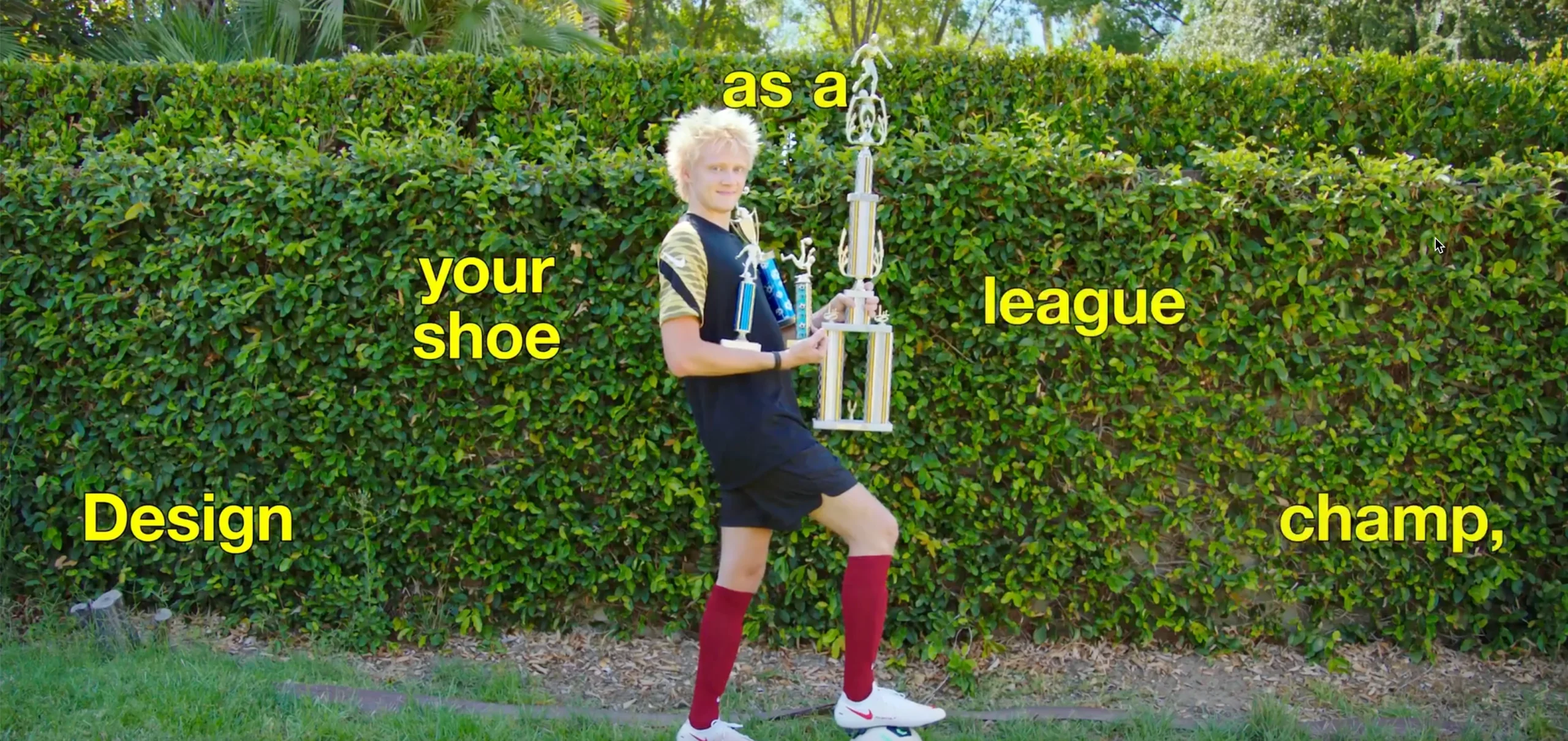
Online Auctions and Bidding Sites: Participating in online auctions for rare or unique items can be thrilling. The excitement of bidding and the possibility of winning create a fun and competitive shopping environment.
Example: eBay – A popular platform for online auctions where you can bid on a wide range of items.
Flash Sale and Deal Websites: The rush of grabbing a great deal from flash sales or limited-time offers on websites adds an element of excitement and urgency to the shopping experience.
Example: Groupon – Known for offering time-limited deals and discounts on various products and services.
Subscription Box Services: Signing up for subscription boxes, where you receive a curated selection of items (like beauty products, books, or gourmet foods) monthly, offers the joy of surprise and discovery.
Example: Birchbox – A service that delivers personalized beauty product samples to subscribers each month.
Social Shopping Platforms: Platforms that integrate social media elements, allowing users to share, like, and comment on products, create a community-driven shopping experience.
Example: Etsy – A marketplace that allows users to connect with artisans and crafters, and often includes social features like reviews and favorites.
Online Art Galleries and Digital Exhibitions: Exploring online art galleries or digital exhibitions where you can view and purchase art from around the world offers a culturally enriching shopping experience.
Example: Saatchi Art – Offers an online platform for viewing and purchasing art from around the world
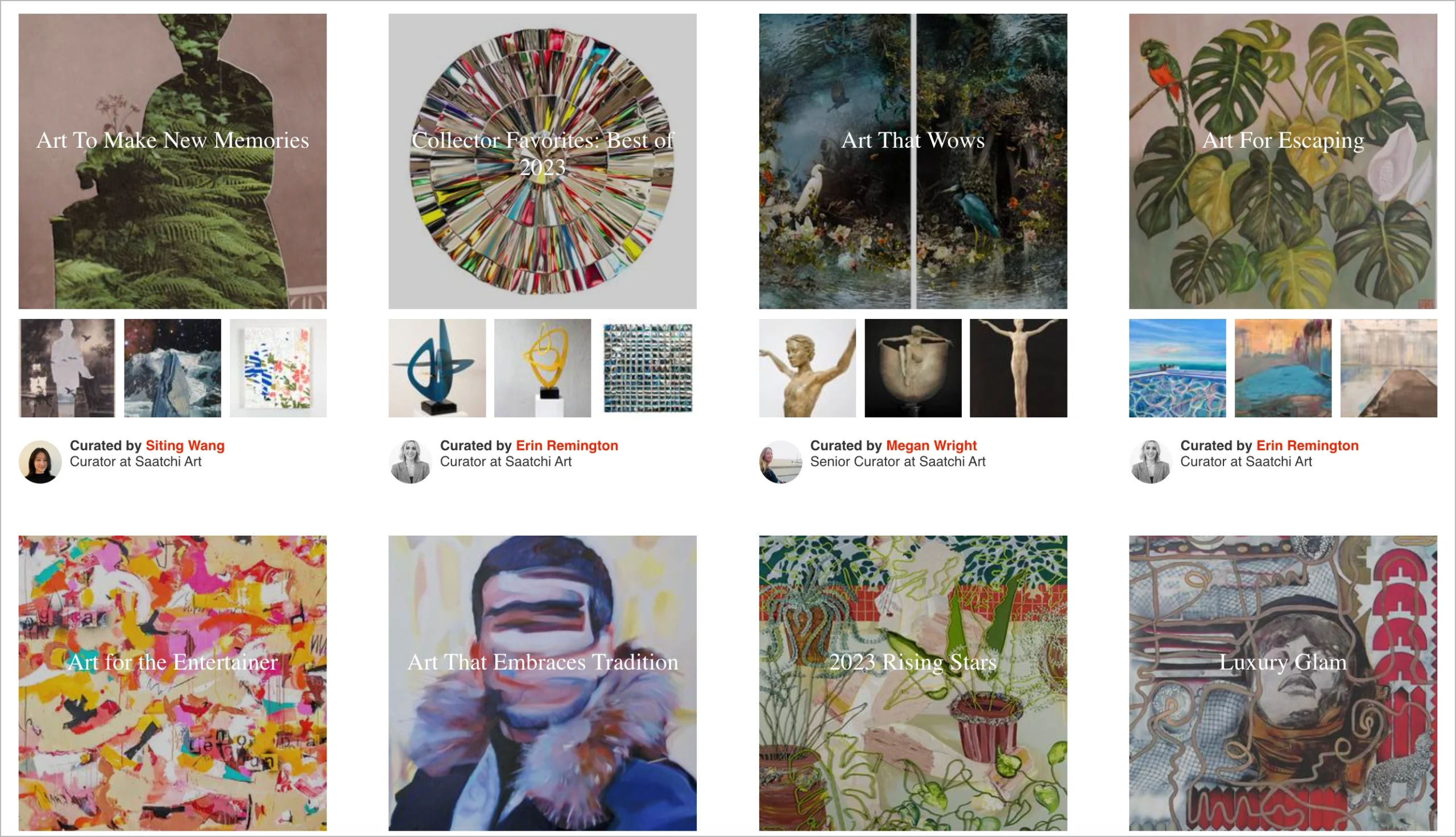
Online Themed Stores: Niche online stores that focus on specific themes or fandoms offer a unique shopping experience for enthusiasts looking to find specialized items related to their interests.
Example: ThinkGeek – Specializes in products for fans of science fiction, gaming, and pop culture.
Virtual Window Shopping: Browsing through high-end online retailers, exploring luxury goods, and creating wish lists, even if not making a purchase, can be a pleasurable experience.
Example: Net-A-Porter – A luxury fashion retail website that offers a high-end browsing experience.
Interactive and Immersive Websites: Online stores with interactive features, like 3D product views, engaging videos, and immersive layouts, make the browsing experience enjoyable and entertaining.
Example: ASOS – Known for its engaging and interactive online fashion store.
How Does the Concept of ‘Idea Shopping’ Influence Consumer Behavior?
The concept of ‘idea shopping’ influences consumer behavior by encouraging individuals to explore and compare a variety of concepts, trends, and products before making informed and personalized purchasing decisions. They can get to know different brands better and uncover new desires, and occasionally, they might make an unplanned purchase if something truly strikes a chord with their personal aspirations or interests.
What Exactly Is the Essence of Hedonic Marketing?
The essence of hedonic marketing is making use of emotional connection throughout the various marketing strategies and techniques. It focuses on delivering experiences that stimulate the senses. It also evokes emotions and fulfills psychological needs.
This kind of marketing tries to connect emotionally and offers something that fits into the consumer’s life and boosts how they see themselves.
On top of that, it translates into the conversion rates.
Get 111 Landing Page Examples—The Ultimate Guide for FREE
What Are the 9 Tips to Boost Conversion Rates for Hedonic Shoppers?
To elevate conversion rates among hedonic shoppers, engage with their search for pleasure and novelty.
Here are nine detailed strategies to captivate this audience:
1. Create an Immersive Experience
An immersive experience is a must for hedonic shoppers who seek sensory stimulation.
This enhanced customer experience can be achieved by:
✔️ Designing engaging store layouts
Both online and physical stores should be visually appealing and easy to navigate, encouraging exploration and interaction.
✔️ Incorporating multisensory elements
Use a combination of music, scents, textures, and interactive displays to create a multi-layered shopping environment.
✔️ Implementing virtual reality (VR) and augmented reality (AR)
These technologies can create engaging and personalized shopping experiences, allowing customers to visualize products uniquely and excitingly.
2. Leverage the Power of Storytelling
Storytelling can deeply resonate with hedonic shoppers by:
- Crafting brand narratives
Develop compelling stories that reflect the lifestyle and aspirations of your target audience, making them the protagonists of the narrative. You can use an AI writer for this purpose.
- Using emotional triggers
Integrate emotional elements into your storytelling to connect with shoppers personally.
- Showcasing the journey
Share the origins of products, the craftsmanship behind them, and the values they represent to create a rich backstory.
3. Offer Personalization
Personalization is a key factor in converting hedonic shoppers:
☑️ Customization options
Allow customers to add personal touches to products, whether monogramming or selecting unique color combinations.
☑️ Curated experiences
Use data analytics to offer personalized recommendations based on past behavior and preferences.
☑️ Interactive design tools
Provide online tools for customers to design or customize products to their liking, adding to shopping fun.
4. Encourage Impulse Buys
Impulse buys are often driven by instant gratification:
➕ Strategic product placement
Position products in high-traffic areas or at checkout to catch the eye of the shopper.
➕ Limited-time offers
Use time-bound deals to create a sense of urgency that can prompt on-the-spot purchases.
➕ Flash sales
Surprise customers with unexpected sales, tapping into the excitement of getting a good deal.
5. Utilize Scarcity and Exclusivity
Scarcity and exclusivity can be powerful motivators:
➡️ Limited editions
Offer products that are available for a short time or in limited quantities to create a sense of exclusivity.
➡️ Members-only products
Provide access to special items or collections exclusively for members or loyal customers.
➡️ Countdown timers
Display countdowns for product releases or sales to build anticipation and prompt immediate action.
6. Engage Through Social Proof
Social proof can validate a hedonic shopper’s purchase decision:
- Highlighting reviews and testimonials
Feature customer positive reviews prominently on product pages and throughout the shopping experience.
- Influencer partnerships
Collaborate with influencers who can authentically promote products to their followers.
- User-generated content
Encourage customers to share their own photos and stories of using the products, creating a community feel.
7. Foster Community
Building a community can enhance brand loyalty:
+ Creating brand clubs or groups
Offer spaces, either online or in-person, where enthusiasts can gather and share their passion for the products.
+ Hosting events
Organize events that allow customers to experience the brand lifestyle, such as workshops, launches, or meet-ups.
+ Engaging on social media
Maintain active and responsive social media profiles where customers can interact with the brand and each other.
8. Offer Exceptional Customer Service
Exceptional customer service can turn a purchase into an experience:
* Training staff for engagement
Ensure that staff are knowledgeable and passionate about the products, able to engage customers in the brand story, and familiar with sales assistant software.
* Providing concierge services
Offer services, such as personal shopping assistants, that make the shopping process as convenient and enjoyable as possible.
* Ensuring a smooth journey
From browsing to after-sales support, make every touchpoint a positive and memorable part of the customer journey.
9. Keep the Discovery Alive
Continual discovery keeps hedonic shoppers engaged:
⬛ Rotating inventory
Regularly introduce new products to keep the inventory fresh and exciting.
⬛ Teasing upcoming releases
Use sneak peeks and previews to build excitement for new products.
⬛ Incorporating interactive technologies
Use tech like AI to recommend new products based on the shopper’s browsing and purchase history, making discovery personalized and dynamic.
Focusing on these strategies, businesses can create a shopping environment that meets the hedonic shopper’s desire for pleasure and excitement and encourages them to make purchases that satisfy their emotional and experiential needs, thereby increasing conversion rates and fostering long-term loyalty.
What Tools Measure Hedonic Shopper Conversion Rates?
To effectively measure hedonic shopper conversion rates, use classical web analytics (like Google Analytics or – if you’d like to track landing pages – EventTracker) combined with tools for recording sessions. With the latter, you’ll discover how hedonic shoppers behaved on your sites before converting.
Important remark: hedonic shoppers are – in most cases – those who deeply interacted with your page before making a purchase. I mean here interactions like reading your copy, watching videos, scrolling, clicking buttons, etc. You can check it with session recording apps like Clarity.
What Strategies Cater to Hedonic Shoppers?
Strategies to cater to hedonic shoppers include using storytelling in marketing to evoke emotions, designing visually appealing and interactive websites, and personalizing the shopping experience based on customer data.
Leveraging social media for interactive campaigns and influencer partnerships also effectively connects with hedonic shoppers, who often value community engagement and aspirational lifestyles.
These strategies aim to tap into the emotional and experiential aspects that drive hedonic shoppers’ purchasing decisions.
What’s the Best Strategy to Boost Hedonic Shopper Conversions?
The most effective strategy to boost hedonic shopper conversions involves creating a highly personalized and emotionally resonant shopping experience, which can be accomplished through the use of data-driven personalization to tailor product recommendations and marketing messages, integrating engaging and interactive elements into online platforms, and crafting compelling stories around products that resonate with the shoppers’ desires and aspirations.
Additionally, ensuring a seamless and enjoyable shopping process, from browsing to checkout, significantly enhances the overall experience, leading to higher conversion rates.
What Triggers Enhance Conversion Rates for Hedonic Shoppers?
Triggers that enhance conversion rates for hedonic shoppers include sensory appeal such as visually striking images or engaging video content, and emotional resonance, achieved through storytelling that connects with the shopper’s lifestyle and aspirations.
Creating a sense of urgency with limited-time offers or exclusive deals also effectively drives conversions.
Learn how to make use of a sense of urgency with the countdown timer widget.
Additionally, leveraging social proof through customer reviews and influencer endorsements can significantly influence hedonic shoppers, who often value the opinions and experiences of others in their purchasing decisions.
How does hedonic shopping differ from utilitarian shopping?
Hedonic shopping is characterized by the pursuit of pleasure, emotional engagement, and sensory gratification, focusing on the enjoyment of the shopping experience itself, while utilitarian shopping is pragmatic, efficiency-oriented, and driven by the necessity to acquire specific items, prioritizing functionality and purpose over the enjoyment of the shopping process.
Does Hedonic Marketing Exist?
Yes, hedonic marketing does exist; it’s a strategy that focuses on creating emotional connections and appealing to the sensory and experiential desires of consumers, often emphasizing pleasure, excitement, and aesthetic enjoyment in both products and the shopping experience to engage and attract customers who seek pleasure and in their purchases.
Which Age Groups Prefer Hedonic Shopping?
Hedonic shopping tends to be more popular among younger age groups, particularly millennials and Gen Z, who often seek experiences, emotional engagement, and personal expression in their purchasing behavior more than utility itself.
How do Cultural Differences Affect Hedonic Shopping?
Cultural differences greatly impact hedonic shopping, as varying cultural values and norms influence what is considered pleasurable or desirable. For instance, Western cultures might emphasize individualistic and luxury experiences, while Eastern cultures may focus on community-oriented and harmony-driven shopping experiences.
How does Brand Loyalty Influence Hedonic Shopper Conversion Rates?
Brand loyalty significantly influences hedonic shopper conversion rates as loyal customers are more likely to be emotionally invested in a brand, making them more receptive to hedonic marketing strategies that emphasize sensory and emotional appeal. As a result, they convert more often than customers who are not yet familiar or engaged with the brand.
How have Online Trends Affected Hedonic Shopper Behavior?
Online trends have deeply affected hedonic shopper behavior by amplifying the importance of digital experiences, visual appeal, and social media engagement. The rise of e-commerce, influencer marketing, and interactive online content has made shopping more emotionally engaging, catering to hedonic shoppers who value excitement, novelty, and social validation in their shopping experiences. This shift has led to more immersive and personalized online shopping environments, directly impacting how hedonic shoppers interact with brands and make purchasing decisions.
How do Events Impact Hedonic Shopper Conversion Rates?
Events impact hedonic shopper conversion rates by creating unique, emotionally charged experiences that resonate with shoppers, often leading to increased engagement and purchases. Special events, like limited-time promotions or exclusive launches, can heighten the sense of excitement and exclusivity, driving higher conversion rates among shoppers.
How do Social Media Trends Influence Hedonic Shopping?
Social media trends changed the way hedonic shoppers make their purchasing decisions by promoting aspirational lifestyles and creating a platform for brand storytelling, which aligns with the emotional desires of hedonic shoppers. The visual and interactive nature of social media, along with influencer marketing, significantly shapes consumer perceptions and desires, encouraging purchases driven by trends, social validation, and the pursuit of pleasure, thus enhancing the appeal and engagement of hedonic shopping experiences.
How has Tech, Like Augmented Reality, Improved the Hedonic Shopping Experience?
Technologies like augmented reality (AR) have greatly enhanced the hedonic shopping experience by adding an immersive and interactive layer to online shopping. AR allows customers to visualize products in real-world settings or try them on virtually, making the shopping experience more engaging, enjoyable, and personalized.
How does Sustainability Affect Hedonic Shopper Decisions?
Sustainability increasingly affects hedonic shopper decisions as consumers become more aware of environmental and ethical implications. Shoppers seeking pleasure and novelty are now also considering the sustainability of their purchases, with a growing preference for brands that align with their environmental values. This shift has led brands to integrate sustainable practices into their products and marketing, fulfilling their needs.
How do Economic Changes affect Hedonic Shopping?
Shifts in the economy influence consumer spending power and priorities. In prosperous times, there’s typically an increase in discretionary spending, fueling hedonic shopping behaviors focused on pleasure and luxury. Conversely, during economic downturns, consumers may become more cautious, prioritizing essential purchases over hedonic ones. However, even in challenging economic conditions, some consumers might engage in hedonic shopping as a form of escapism or to maintain a sense of normalcy, though with possibly adjusted spending limits.
Is Online or Offline Retail Better for Targeting Hedonic Shoppers?
Choosing between online and offline retail for targeting hedonic shoppers depends on the shopping experience each can provide: online retail excels in offering convenience, a wide range of products, and personalized recommendations, making it ideal for targeted marketing and impulse purchases, while offline retail, however, offers a tactile and immersive experience, crucial for shoppers who value sensory engagement and the pleasure of the shopping environment. Both channels have unique advantages for appealing to hedonic shoppers, and the best choice often depends on the specific preferences and behaviors of the target consumer group.
In Which Industries is Hedonic Shopping more Common?
Hedonic shopping is more common in industries that focus on lifestyle, pleasure, and personal enjoyment, including fashion and apparel, where aesthetic appeal and trendiness are key factors; beauty and cosmetics, which offer sensory experiences and personal pampering; luxury goods, where the exclusivity and status symbol are significant; entertainment and technology, particularly gadgets that offer new and exciting experiences; and home decor, where personal expression and comfort are paramount. In these industries, the emotional and sensory appeal of products plays a crucial role in attracting and retaining customers.
What are the Ethical Concerns in Targeting Hedonic Shoppers?
Targeting hedonic shoppers raises ethical concerns around consumer manipulation and the promotion of materialism. Marketing strategies focusing on emotional and sensory appeals can sometimes exploit psychological vulnerabilities, leading to impulsive or excessive consumption. There’s also the risk of perpetuating unsustainable consumption habits and fostering unrealistic lifestyle expectations, especially among vulnerable demographics. Ethical marketing in this context requires a balance, ensuring that strategies are responsible and transparent, avoiding the exploitation of consumers’ emotions for profit.
Read More on Hedonic Shopping
For those eager to learn more about the psychology of hedonic shopping, here are several sources that provide a wealth of information:
- “The Why of the Buy: Consumer Behavior and Fashion Marketing” by Patricia Mink Rath – This book offers insights into consumer behavior specifically in the fashion industry, a prime hedonic shopping sector.
- “Hedonic Consumption: Emerging Concepts, Methods and Propositions” by Morris B. Holbrook and Elizabeth C. Hirschman – An academic paper that delves into the early conceptualization of hedonic consumption, providing foundational knowledge on the subject.
- “The Psychology of Luxury Buying: Emotional Desires and Pleasure in Hedonic Consumption” – A Forbes article that discusses the emotional aspects of luxury purchases, a key component of hedonic shopping.
- “Consumer Behavior: Buying, Having, and Being” by Michael R. Solomon – This textbook is a comprehensive resource on consumer behavior, including the motivations behind hedonic shopping.
- “Experiential Retailing: Concepts and Strategies That Sell” by Brenda Sternquist – A book that focuses on retail strategies designed to sell experiences as much as products, catering to the hedonic shopper.
These sources will give readers a bigger picture of the motivations behind hedonic shopping and the strategies that can be used to market to consumers looking for an experience, not just a product.
Handle Hedonic Shoppers’ Needs through Landingi!
In Landingi you can take your marketing strategy up a notch, and this applies also to hedonic shoppers. Which of the platform’s capabilities could weigh in gold here?
Well, in Landingi you can build amazing pages with hundreds of templates, personalize them in every detail, enrich with images, videos, sliders, calendars, maps, buttons and… whatever you like! That is to say, you have all the tools to allow them to do what they really love: explore, experience, feel and dream about the product. Always on the path to conversion.
Try us for free!

